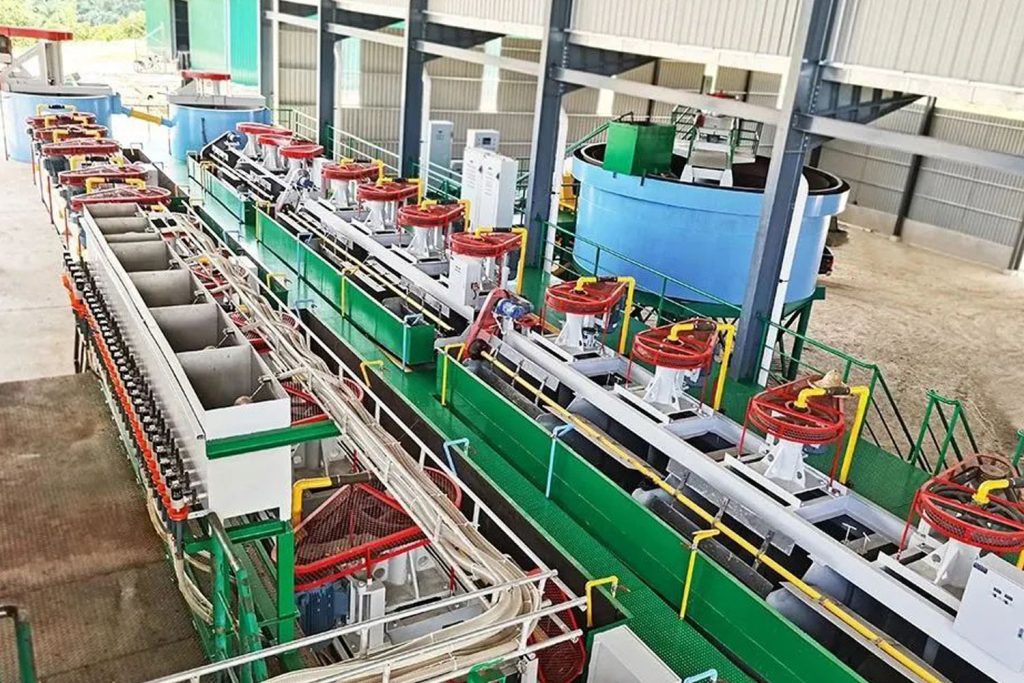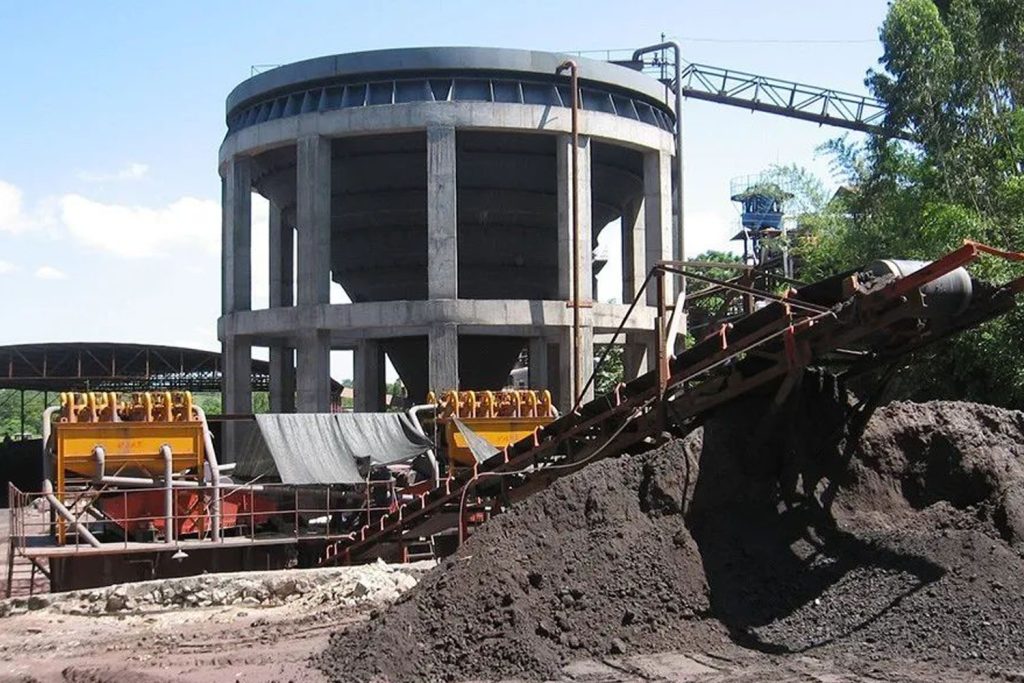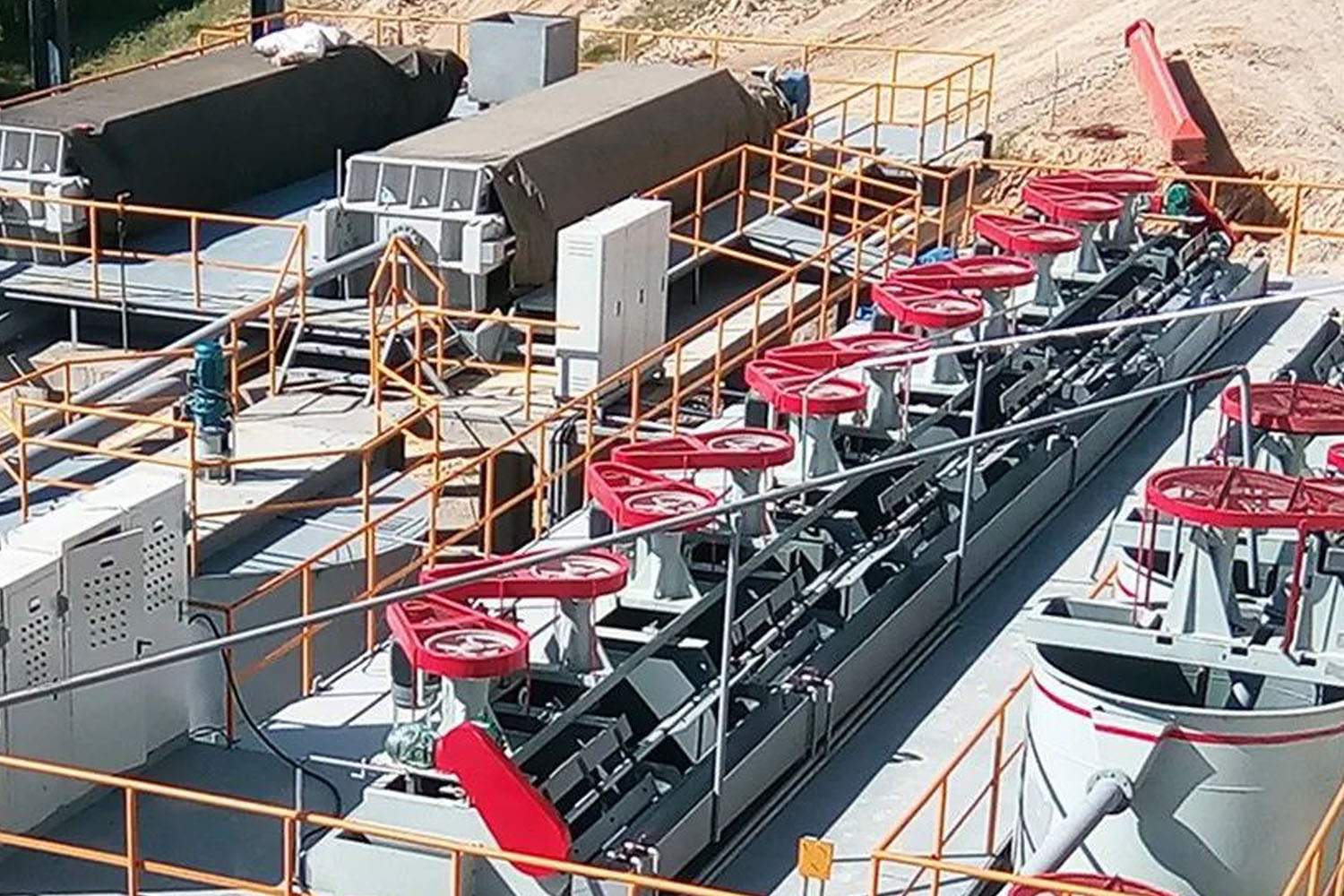Altered rock type gold deposits (also known as hydrothermal alteration type gold deposits) refer to gold-bearing deposits formed by underground hydrothermal alteration. This type of gold deposit mainly occurs in the metamorphic rock belt near the structurally active zone. The underground hydrothermal fluid will rise with high temperature and high pressure mineralized fluid, and react with the surrounding rocks, causing the rocks to be altered and mineralized. Gold, silver and other metal elements in the fluid will then precipitate to form gold deposits.
Altered rock-type gold mine tailings are wastes and unseparated metal minerals that have not been extracted during the mineral processing. In order to reduce environmental pollution, effective tailings treatment methods must be adopted. There are usually two methods of tailings treatment: dry stacking and tailings pond accumulation. These two methods will be introduced and analyzed below.
dry stack
Dry stacking is a relatively common treatment method for tailings in altered rock type gold ore mineral processing. Its main purpose is to promote the decomposition and transformation of toxic and harmful substances in tailings through oxidation. At the same time, it can save land and reduce treatment costs, and has certain environmental protection and economic benefits.
The principle and process of dry stacking
Dry stacking is to transfer the tailings to the designated site through conveyor belts or trucks and other transportation means, and then form a reasonable triangular pile, using natural accelerators to make them dry naturally and oxidize and decompose.
During the dry stacking process, due to the influence of climate change and natural environmental conditions, the water in the tailings will gradually volatilize, thereby promoting its natural oxidation, which is beneficial to the decomposition and transformation of toxic and harmful substances, and reduces environmental pollution.

Three Advantages of Dry Stacking
- Save land. Dry stacking can be carried out on low-priced or useless plots near mines, saving land resources in mining areas and living areas;
- Reduce secondary pollution. During the drying and stacking process of the tailings, the harmful substances are volatilized and decomposed, reducing the pollution to the environment;
- Reduce management costs. Dry stacking has lower operating costs and does not require long-term maintenance and management.
Two Major Disadvantages of dry stacking
- Takes a long time. The oxidation process of tailings takes a long time and requires a certain amount of space;
- It is greatly affected by rain. If there is rainy weather, it will affect the natural drying and oxidative decomposition process of sludge, which may cause landslides and secondary pollution of piled sludge.
tailings pond accumulation
Tailings pond accumulation is a common treatment method for tailings in altered rock type gold ore mineral processing. The tailings are transferred to the designated tailings ponds for storage by conveyor belts or trucks and other means of transport, waiting for leaching recovery or further processing.
Tailings pond accumulation is more commonly used than dry stacking, and it is suitable for situations where tailings need to be processed quickly or the water content in tailings is high.
The tailings pond storage method can process the waste slurry through natural sedimentation and filtration, so that the solid particles in the waste slurry settle at the bottom and form a relatively clear liquid at the top. The treated tailings water is not only clean in appearance, but also has certain reusability, thereby effectively reducing environmental pollution.

The principle and process of tailings pond accumulation
The principle of the tailings pond accumulation method is to separate the waste materials by using the principle of gravity sedimentation and filtration during the tailings treatment process. In the tailings pond, the waste material will settle to the bottom under the action of gravity, while the water body will float to the top to form a relatively clear liquid.
At the same time, the method of filtering is adopted to separate the smaller solid particles and suspended solids in the tailings water through the filter layer, thereby avoiding its adverse impact on the environment.
Four Major Advantages of tailings pond storage method
- Simple equipment: Compared with other treatment methods, the tailings pond accumulation method requires relatively simple equipment and low maintenance costs, so the operation cost is low.
- Stable treatment effect: By adopting the principle of gravity sedimentation and filtration, a better treatment effect can be obtained. The treated tailings water has a clean appearance and stable quality, which can meet the discharge standard.
- Good safety: No secondary pollution will be generated during the tailings pond accumulation method, and it will not have adverse effects on the environment and human health.
- High reusability: The tailings water treated by the tailings pond accumulation method has certain reusability and can be used for flushing equipment, thus saving water resources.
In conclusion
In conclusion, the tailings pool accumulation method is a simple and effective treatment method for altered rock-type gold mine tailings, which has the advantages of low cost, stable treatment effect, high safety, and good reusability. Industrial costs are of great significance.
